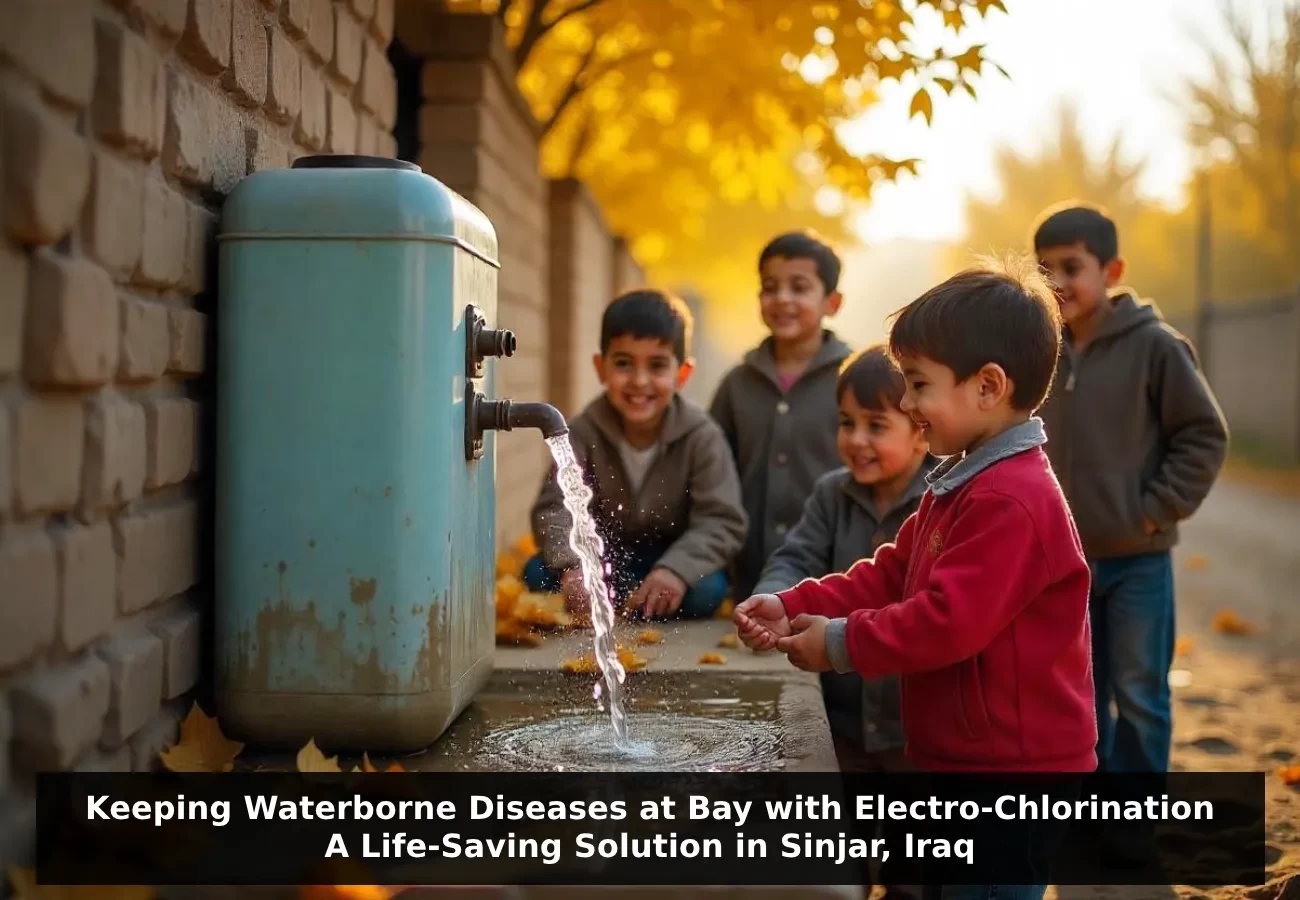Keeping Waterborne Diseases at Bay with Electro-Chlorination: A Life-Saving Solution in Sinjar, Iraq
Access to clean drinking water is a basic human right, but for many remote areas around the world, providing safe water can be a significant challenge. In northern Iraq, the residents of Sinjar faced this very issue. With limited resources and an unstable environment, ensuring access to safe drinking water seemed increasingly difficult. However, through a collaboration with Grundfos and the support of Save the Children International, an innovative solution has been put in place that is transforming the lives of 15,000 people in this community.
The Challenge: A Struggle for Safe Drinking Water
For years, the Ninewa Directorate of Water relied on chlorine to disinfect the water supplied to the community of Sinjar. However, with escalating armed conflict in the region and a decrease in oil prices (which funds much of Iraq's government infrastructure), the supply of chlorine was cut off. This left the local water system unprotected from harmful waterborne diseases, such as diarrhoea and typhoid, which are major health threats, particularly to children and vulnerable populations.
The halt in chlorine deliveries was a result of multiple factors:
- Security Concerns: Chlorine is a hazardous substance and, in a conflict zone, there were fears it could be stolen and used as a chemical weapon by hostile groups.
- Economic Constraints: With Iraq's budget strained due to political and economic challenges, there simply wasn’t enough funding to maintain the chlorine supply.
As a result, the people of Sinjar were at high risk of contracting waterborne diseases, which could have devastating effects on their health and wellbeing.
The Solution: Electro-Chlorination Technology
To address this dire situation, Save the Children International launched an initiative to find a sustainable solution to disinfect the water. Working closely with Grundfos, a global leader in water treatment and technology, they turned to electro-chlorination—a groundbreaking and environmentally friendly technology.
Grundfos suggested the use of the Selcoperm electro-chlorinator, a system that uses common salt, water, and electricity to produce sodium hypochlorite, a disinfectant that is highly effective in killing bacteria and viruses in drinking water. This technology offers a major advantage over traditional methods—it does not rely on external chlorine supplies and uses locally available resources to generate the disinfectant.
How Electro-Chlorination Works
The Grundfos Selcoperm electro-chlorinator works through a process of electrolysis, where electrical current is passed through saltwater. This reaction produces a chlorine solution (sodium hypochlorite) that is safe to use for disinfecting drinking water. The system is scalable, cost-effective, and can be maintained locally, making it an ideal solution for regions with limited resources or where access to chemical disinfectants is a challenge.
This technology has proven to be both reliable and sustainable, providing a constant supply of chlorine to treat the water without the risks associated with transporting and storing toxic chlorine gas.
The Impact: A Healthier and Safer Future for Sinjar
The installation of the Grundfos Selcoperm electro-chlorinator in Sinjar has already begun to make a significant impact. Now, water from the local supply can be safely disinfected, ensuring that residents—especially the children—are protected from waterborne diseases. With this system in place, the community no longer has to worry about water contamination, as it ensures that water is safe to drink and use.
The impact of this solution extends beyond just water safety. By using local resources and a technology that can be maintained with minimal training and cost, the Selcoperm electro-chlorinator provides a long-term, sustainable solution that will continue to benefit Sinjar’s residents for years to come.
Looking Ahead: The Role of Innovation in Global Water Security
This collaboration between Grundfos, Save the Children International, and the Ninewa Directorate of Water highlights the importance of innovation in tackling global water security issues. In a world where access to clean water is often disrupted by conflict, economic challenges, and infrastructure limitations, the Selcoperm electro-chlorinator offers a forward-thinking solution that can be deployed in areas facing similar challenges.
By empowering local communities to produce their own disinfectant, Grundfos is helping to create a more resilient and sustainable water treatment system. This approach not only ensures the safety and health of communities but also reduces the reliance on external supplies and expensive chemicals.
Conclusion: A Lifeline for Sinjar
The innovative solution provided by Grundfos in collaboration with Save the Children International is a lifeline for the people of Sinjar. By introducing the electro-chlorination technology, they have not only ensured the safety of drinking water but also helped safeguard the health of 15,000 people who were previously at risk of waterborne diseases.
The Selcoperm electro-chlorinator is a testament to the power of technology in solving critical challenges faced by vulnerable communities. With its sustainable design, the system is poised to make a lasting difference, providing clean, safe water for the people of Sinjar and serving as a model for other regions facing similar challenges.
At Grundfos, we believe that clean water is a right, not a privilege, and we are proud to be part of the solution that brings safe drinking water to those who need it most.
Want to learn more about our innovative water treatment solutions? Reach out today and see how we can help transform water safety in your community.


